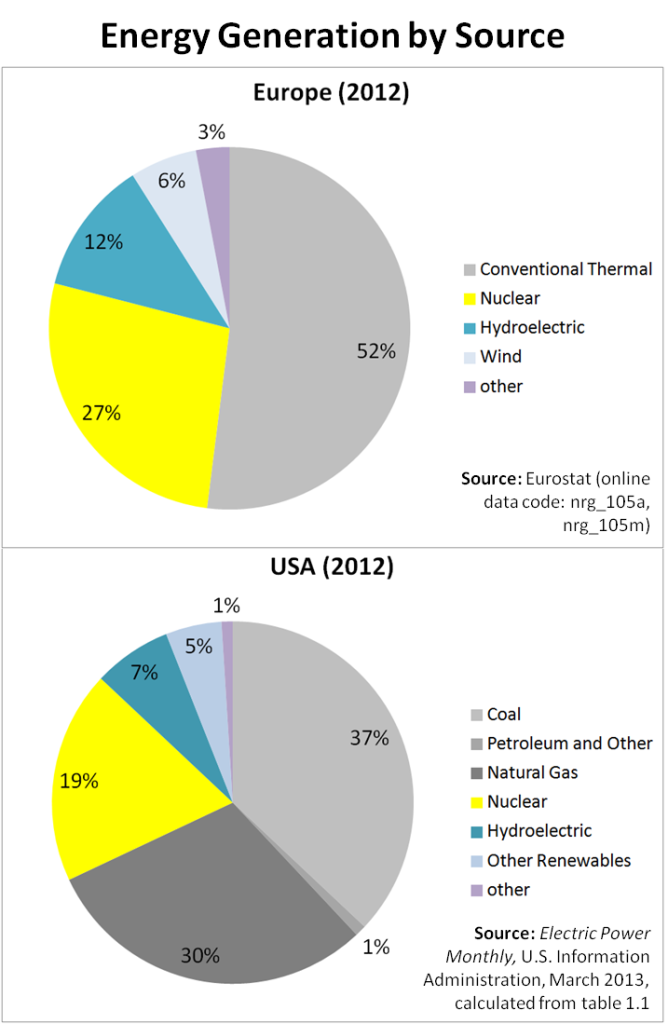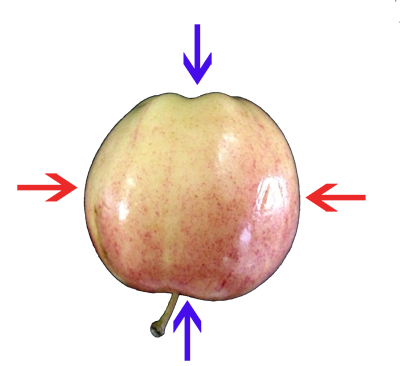 Before you dive into this post I want you to breathe …
Before you dive into this post I want you to breathe …
Inhale through your nose. Listen.
Exhale though your mouth. Feel the air flowing in through your nostrils. Breathe.
in… and… out.
Relax… and…breathe.
I am serious, do it. Slowly. Try to calm down and empty your mind.
I want you to be prepared for the next question.
What is truth?
Think for 30 seconds about something you would consider true.
Without getting too philosophical about what truth is, can be, or should be, I hope you can agree with the following definition:
A statement expresses truth when it is in accordance with facts and/or reality.
Do you agree? You reading this post right now is actually happening and thus has to be true. You know that, but how about others? If you told someone in one year from now, would he believe you? Sure, why wouldn’t he? It is not important, why would you make it up? Right? And he would likely have no way to proof you wrong, anyway.
How often do we have the chance to proof stories and facts we read or hear to be truthful? We often take for truth what others tell us, especially if they back up their facts with other facts.
So how does truth come to be? This questions is not only a serious one in the fields of law and science but also affects our everyday life. Because what we hold for truth can have a big impact on who we are and how we act.
There were a couple of facts I always wanted to check and while doing so I stumbled over a couple of interesting articles. Let me share with you what I found.
The Electric Car

The fact/myth: “Driving electric cars is better for the environment than driving conventional cars”
Origins: The main argument for driving an electric car is that it emits zero greenhouse gases. There is no arguing about that. Consequently, the air quality would be much better if the entire vehicular traffic was comprised of electric vehicles (EVs). Based on this fact the entire technology was considered beneficial for the environment.
Reality: In reality the situation is much more complicated than that. There is not only the question about how the electric power is generated and whether this power production is better for the environment compared to having the cars running on gas. There is also the differences in production, consumption, and life cycles between EVs and conventional cars. At last there is the question of the vehicle disposal (e.g. batteries).
In October 2012 the Journal of Industrial Ecology (© by the Yale University) published an article which describes the outcome of such considerations for the comparison between internal combustion engine vehicles (ICEVs) and electric vehicles (EVs). In their from ‘cradle to dump’ assessment the authors from the Norwegian University of Science and Technology (NTNU) conclude following:
- Results are sensitive to assumptions regarding electricity source, use phase energy consumption, vehicle lifetime, and battery replacement schedules.
- EVs powered by the present European electricity mix offer a 10% to 24% decrease in global warming potential (GWP) relative to conventional diesel or gasoline vehicles assuming lifetimes of 150,000 km (93,750 miles). An assumption of 100,000 km (62,140 miles) decreases the benefit of EVs to 9% to 14% with respect to gasoline vehicles and results in impacts indistinguishable from those of a diesel vehicle.
- EVs exhibit the potential for significant increases in human toxicity, freshwater eco-toxicity, freshwater eutrophication, and metal depletion impacts, largely emanating from the vehicle supply chain.
This basically means a) that there are many factors (such as electric power sources and life time) influencing the outcome of the comparison and b) that EVs cause more environmental risk in their production. So the lower the contribution of fossil fuels to the energy mix and the longer these vehicles can run, the better for the environment. Sounds like a no-brainer, right?
So how does the U.S. energy mix look compared to Europe? Adding up all fossil fuels they contribute 68% to the U.S. power grit compared to 52% for Europe (click on the diagram to enlarge it). According to the U.S. Energy Information Administration (EIA) about “2/3 of the energy used to generate, transmit, and distribute electricity is ‘lost’ at power plants and in power lines“. I am not sure if such losses were considered for the article, but I am sure this is also a significant factor.
Obviously, the entire picture counts. If we want to reduce the human impact on the environment then we need to be efficient and reduce emissions in all areas.
Conclusion: The statement above is obviously neither always true nor is it really wrong if you just think about the driving part. The truth we know is that general statements are not always correct. We just commonly don’t like to deal with all the details.
Eating Apples

The fact/myth: “There is only one way to eat an apple, which is horizontally around the core”
Origins: Prior to tackling our first apple as a whole, we have likely seen someone else eating one by biting into it its side (red arrows) and then working around the vertical axis.
Reality: So apparently, we’ve been eating apples all wrong. The article behind the link describes how much more apple you can eat if you start at one ‘end’ (blue arrow) and work your way through to the other end. The core becomes indeed less prominent. Of course one can eat anything in any possible way and there is not really a right or wrong way. It is just very interesting that I simply never thought about eating apples differently. Maybe that’s the same for you, too.
Conclusion: The truth here is that we start doing many things in daily life a certain way and never think about changing how we do them. At least not before we see someone doing it differently, and maybe even better. As trivial as this example may appear, it shows how sometimes truth just is what everyone around you, including you, thinks it is.
The Mozart Effect
 The fact/myth: “Playing classical music to infants increases their IQ permanently”
The fact/myth: “Playing classical music to infants increases their IQ permanently”
Origins: In 1993 Frances H. Rauscher, Gordon L. Shaw, and Katherine N. Ky published a scientific article in Nature that started an entire movement or I should say started an entire industry. In their study they asked a group of 36 college students to perform three different standard IQ spatial reasoning tasks after listening to
(1) Mozart’s sonata for two pianos in D major, K488
(2) a relaxation tape or
(3) silence.
All students performed all listening tasks. The outcome was that the performance in the IQ tests was significantly better after listening to Mozart’s music compared to the other tasks. The authors mention “the enhancing effect of the music is temporal, and does not extend beyond the 10-15-minute period during which subjects were engaged in each spacial tasks“.
However, by the end of the millennium with the help of some inaccuracies through the media and driven by good marketing (the scientists were not involved) the “Mozart Effect” became a simple method to make us and particularly our kids smarter. It got so far the state of Georgia supported the distribution of CDs with classical music to parents with newborns and Florida passed a law requiring all state financed child-care centers and preschools to play classical music on a daily basis.
Reality: Who would be more trustworthy than an Austrian team to dismantle an effect called the Mozart effect? In 2010 Jakob Pietschig, Martin Voracek, and Anton K. Formann from the Faculty of Psychology of the University of Vienna published a paper with the great title Mozart effect–Shmozart effect: A meta-analysis, the to date most comprehensive review of research done on the Mozart effect (nearly 40 studies). Their final verdict: “On the whole, there is little evidence left for a specific, performance-enhancing Mozart effect“. There is also a bit older post by Donna Lerch and Thomas Anderson titled The Mozart Effect: A closer look which already took a critical view on the topic in 2000.
Conclusion: It sounded so good: Just play some classical music and your kid becomes smarter by the minute. But with the evidence given it is safe to categorize the long-term Mozart Effect as an urban myth.
Spinach
 Fact/Myth: “Spinach is a particularly good source of nutrients ” vs. “Spinach is a vegetable like any other”
Fact/Myth: “Spinach is a particularly good source of nutrients ” vs. “Spinach is a vegetable like any other”
What do you think about Spinach? Well, growing up in the eighties, it was considered THE vegetable for kids, at least where I lived. There was no question about not eating it. But I disliked it so much I was sure it got it’s name because it was made from spiders.
Now, years later my research about spinach turned out to be like digging in quicksand. As bland and boring as this leafy vegetable may appear as complex is its history of misconceptions.
Origins: It all began with the German scientist Emil von Wolf, who misplaced a decimal point and thus ended up reporting the iron content of spinach ten times too high. It is said this error remained unnoticed until the 1930 at which point the tale of the high iron content was commonplace and spinach consumption steadily on the rise.
I also found the version that in 1890 Gustav von Bunge, a Swiss physiologist somehow mixed up dried and fresh spinach and hence published the value of dried spinach as that of the fresh leaves. Because fresh spinach contains about 90% water, the values were 10 times exaggerated.
The result would have been the same: An iron content of a factor ten too high. According to legend this is the reason why Popey the Sailor Man loves spinach so much: All the iron makes him so strong. The Popey cartoons were first published in the late 1920s. This seems as a confirmation of the ‘factor ten mistake’ story.
And here it comes: Mike Dutton, criminalist and editor of the Internet Journal of Criminology wrote a paper titled “Spinach, Iron and Popeye” in which he tries to track down the origins of what he calls the Spinach Popeye Iron Decimal Error Story (SPIDES). He demonstrates convincingly that Elzie C. Seglar, the author of the Popeye comic strip cartoons did apparently not fall for the fake iron values of spinach. Iron was apparently never the reason for Popeye’s obsession with spinach, but Vitamin A, another important nutrient.
Dutton further writes that he could not even find any evidence for a decimal error made by either von Wolf or von Bunge. We are now dealing with a myth about fake iron values. Or are they not fake?
Interestingly, he also mentions a group of biochemists from the University of Wisconsin who had published a paper in 1934 in which one could easily interpret the presented iron values as 20 times too high, by confusing dried with fresh spinach. There we go again.
Apparently completely undisturbed by Mike Dutton’s criminalistic efforts continues this decimal-point-error-Popey-story to be propagated through the media (see e.g. UKs Daily Mail Online Spinach-Popey article from July 2013) and will therefore remain the truth for many. Those who believe it may assume Spinach has very little iron and is not really healthful.
Reality: So what about the nutrients in spinach? Raw spinach contains 2.71 mg/100 mg of iron (USDA nutrient database), which is more than raw, ground beef (1.99 mg/100 g), raw Brussels sprouts (1.40 mg/100 g), raw Russet potatoes (0.73 mg/100 g), Iceberg lettuce (0.41 mg/100 g), but much less than pork liver (23.30 mg/ 100 g) and less than raw lentils (7.54 mg/ 100 g), egg bagels (3.98 mg/ 100 g) or mussels (3.95 mg/ 100 g). Hence, spinach is still one of the vegetables with the higher iron contents. Unfortunately is iron from plants (non-heme), two to three times less efficiently absorbed by the human body than (heme) iron from meat, poultry and fish (CDC). Additionally, it also contains relatively high levels of oxalic acid which can further reduce the body’s iron absorption.
But even more important than the much talked about iron, spinach contains many other valuable minerals. For example more potassium than bananas (558 mg/100 g vs 358 mg/100 g), A, B, and C vitamins, folates and lots of inorganic nitrate. The latter was found to have beneficial effects when exercising (Herndandez et al. 2012).
Conclusion: Trusting the USDA values, which are in the same range as values from other sources, one can make a point that spinach is indeed a very healthful vegetable. Reading Mike Dutton’s account it becomes obvious how difficult it can be to trace back the original sources of a statement. Even more astonishing is how readily ‘facts’ are propagated if they make for a good story even among people who should know better. We all love good stories and we want to believe them especially when we hear them from different ‘sources’.
Statistics
 Fact/Myth: “Nobody likes donuts”
Fact/Myth: “Nobody likes donuts”
Origins: Deborah H. from Strawberry, CA had a great idea after she noticed how many of the employees in her big office building were battling with the traffic to get some snacks across the street. She would provide them with something to snack on. Her dilemma was that she could do it only once per day, either at 9.30 AM in the morning or at 3.00 PM in the afternoon. She also figured that she would provide either donuts or bagels. Brenda at marketing suggested A/B testing to figure out what time and what snack would be best.
To do so Deborah took two days off. One day she bought plenty of donuts and on the other day bagels. Equipped with her snacks she waited each day at 9.30 AM and at 3.00 PM for half an hour in the main hall and asked everyone exiting the elevator whether they would like a snack. At 9.30 most people refused with the comment they just had breakfast, but more preferred bagels (30% over 20%). Clearly more people were open for something to eat at 3.00 PM, again with a better success rate for bagels (70% over 60% for donuts). So her test was successful and she decided to go for bagels at 3 PM. As she happily showed her friend Brenda her results, Brenda did not agree with her. She suggested to go with donuts, because overall more people liked donuts over bagels. Both were convinced they are right.
 Reality: Probably ever since mankind was able to record, sort and convert data, people were fighting about how to interpret results. Statistics can be misleading, because one can get different answers to similar questions. The devil hides in the detail. When two companies claim to be Number One in their field then they may look at different metrics. But what if they look at the same metric? Then one of them must be lying, right?
Reality: Probably ever since mankind was able to record, sort and convert data, people were fighting about how to interpret results. Statistics can be misleading, because one can get different answers to similar questions. The devil hides in the detail. When two companies claim to be Number One in their field then they may look at different metrics. But what if they look at the same metric? Then one of them must be lying, right?
Not necessarily. Let’s take the two lawyers Mike and Peter. Peter claims that he had a better success rate in his trials than Mike in three consecutive months. This is true when you look at the table. Mike, however, also rightly claims to have a much better success rate for the entire first quarter. How can this be?
These both cases are examples of the so called Simpson’s Paradox or Yule-Simpson effect. I am pretty sure similar cases were observed much earlier, but Karl Pearson and Udny Yule have described such observations in scientific publications in 1899 and 1903, respectively. Edward H. Simpson was apparently the first to describe this seemingly paradox observation in detail in his 1951 publication for the Journal of the Royal Statistical Society.
So how can this happen? By segmenting the entire dataset into months, three different groups with very different sizes (weights) are created. Looking at Mike’s data, you can see that the number of trials he had in January is much lower than for February and March. Thus, the 0% for this month don’t have much weight (only ~12% of his cases). This is the same case for Peter’s February. On the contrary his ten January trials are more than one third of all cases, so these 20% weigh much more than Mikes 0%. Deborah’s created the same situation. The 30% for the 9.30 AM bagel round have much less weight than the 70% of her afternoon round.
Conclusion: Simposon’s paradox is a great example for how statistics can create situations with seemingly two opposing truths. This is why statistics can be used to substantiate all sorts of claims. It is not the math that is misleading but the language used, which has to be carefully adapted. We see this all the time in political races when metrics, time frames, and groups are are freely alternated, depending on the current situation.
One last comment
A statement expresses truth when it is in accordance with facts and/or reality. The thing is, it’s apparently hard to tell what is a fact and/or reality. Often what we take for a fact may be the generalization, exaggeration or falsification of a true core or simply be another just as truthful reality from another perspective. “I know that I know nothing” as Socrates put it more than 2400 years ago, is not a statement of despair or weakness, but of awareness and power.
Resources
Electric Car
- T.R. Hawkins, B. Singh,G. Majeau-Bettez, A. Hammer Strømman (2013) Comparative Environmental Life Cycle Assessment of Conventional and Electric Vehicles, Journal of Industrial Ecology, Volume 17, Issue 1, 53–64.
Eating Apples
- Blog & Video: Foodbeast.com: So apparently, we’ve been eating apples all wrong.
Mozart Effect
- Article: J. Pietschnig, M. Voracek, A.K. Formann (2010) Mozart effect–Shmozart effect: A meta-analysis, Inteligence, Volume 38, Issue 3, 314-323.
- Article in the Washington Post (1998) about the regulations regarding classical music: A Pitch for the Classics, Slightly Off-Key.
- Post by D. Lerch and T. Anderson: The Mozart Effect: A Closer Look.
Spinach
- Article: M. Dutton (2010) Spinach, Iron and Popeye: Ironic lessons from biochemistry and history on the importance of healthy eating, healthy scepticism and adequate citation, Internet Journal of Criminology, 4-34.
- Centers for Disease Control and Prevention (CDC) information on Iron and Iron Deficiency
- USDA nutrient database
- Article about the benefits of Nitrate when exercising: A. Hernández, T. A. Schiffer, N. Ivarsson, A.J. Cheng, J.D. Bruton, J.O. Lundberg, E. Weitzberg, and H. Westerblad (2012) Dietary nitrate increases tetanic [Ca2+]iand contractile force in mouse fast-twitch muscle, The Journal of Physiology, 590, 3575-3583. For lighter reading, this article is well summarized by the Independent.
Statistics
- Article: E.H. Simpson (1951) The Interpretation of Interaction in Contingency Tables, Journal of the Royal Statistical Society. Series B (Methodological), Volume 13, No 2, 238-241
Thank you for reading this far. What now? You can leave a comment or share this article, which helps me writing more of these. Or if you want to get notified about new posts: